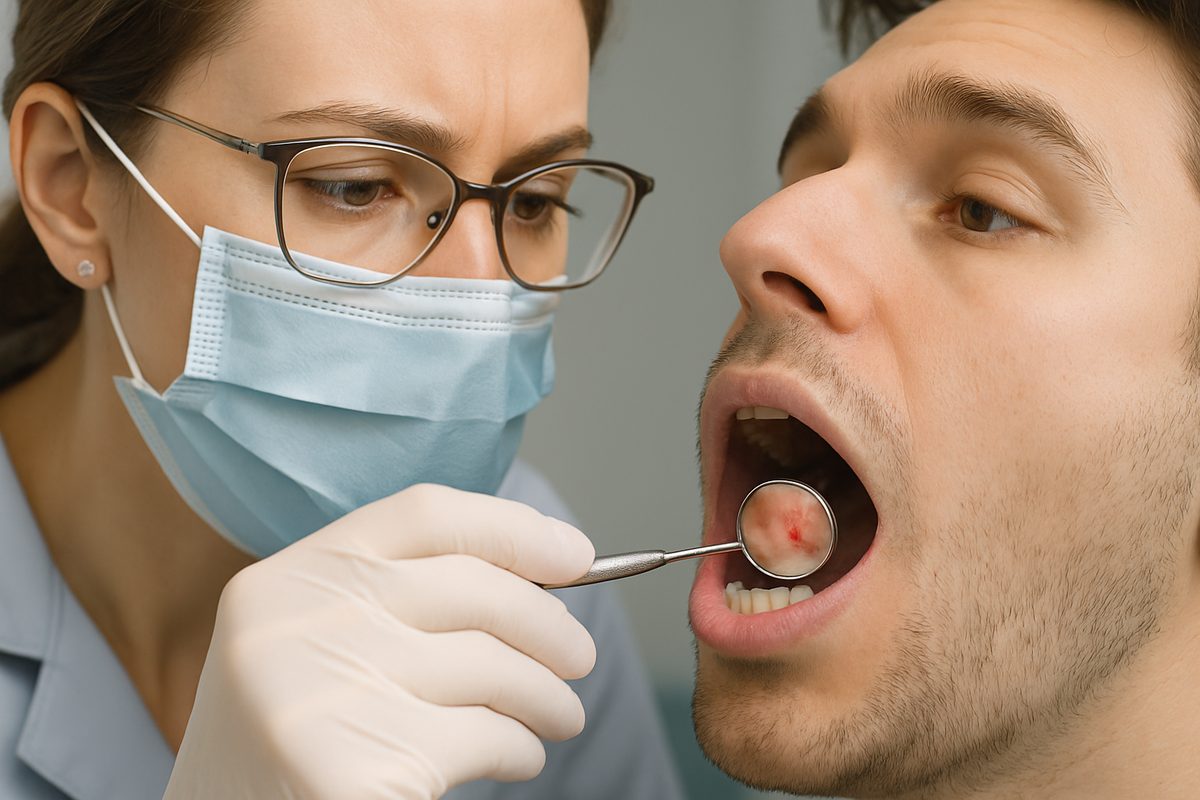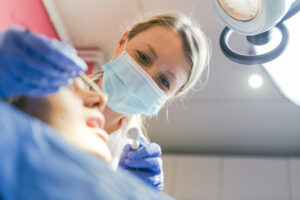Intro: A dental cut is a soft-tissue injury inside the mouth — a laceration to the lips, tongue, cheeks, or gums. Even small cuts can bleed, hurt, and sometimes become infected. Knowing how to handle a dental cut and when to get professional care can speed healing and avoid complications. This article explains what a dental cut is, common causes, immediate first aid, signs you need a dentist, treatment options, aftercare, prevention, and where to get help for a dental cut in Thayer, MO or a dental cut in Walnut Ridge, AR.
What Is a Dental Cut?
A dental cut is any tear or laceration to the soft tissues inside the mouth. Minor scrapes from biting your cheek or a rough food particle usually heal quickly. Deeper lacerations or surgical cuts reach more tissue, may gape, and take longer to heal. Location matters: a cut on the tongue bleeds more and may feel painful when speaking or eating, while a gum cut may be less painful but more prone to infection. A dental cut in Thayer, MO or a dental cut in Walnut Ridge, AR should be watched closely for swelling or spreading redness.
Common Causes of Dental Cuts
Accidental bites and chewing
Biting your tongue or cheek while eating or during a sudden movement is a common cause. Chewing hard or sharp foods can tear soft tissue. Grinding or clenching teeth can expose you to repeated trauma that leads to a dental cut.
Dental procedures and appliances
Braces wires, sharp edges on crowns or dentures, and some dental tools can cause cuts. Surgical cuts happen during tooth extractions or other procedures. Small appliance-related cuts often heal once the wire is padded or the restoration is adjusted.
Trauma and sports injuries
Falls, collisions, and contact sports cause many dental cuts. Wearing a mouthguard during sports lowers risk. If the injury is from a forceful blow, check for broken teeth or jaw injury along with any dental cut in Walnut Ridge, AR or dental cut in Thayer, MO.
Immediate First Aid for a Dental Cut
1. Stay calm and sit upright. 2. Stop bleeding by applying firm pressure with clean gauze or a damp tea bag for 15–20 minutes. If bleeding continues past 20 minutes, seek professional care. 3. Use a cold compress on the face to reduce swelling — 10 minutes on, 10 minutes off. 4. Avoid vigorous rinsing right away; after 24 hours, rinse gently with warm saltwater (half teaspoon salt in 8 ounces of water) several times a day. 5. Use over-the-counter pain relievers like acetaminophen or ibuprofen as directed. Avoid aspirin for children. 6. Don’t pick at the wound, probe with sharp objects, or use hydrogen peroxide repeatedly — these can slow healing.
Signs a Dental Cut Needs Professional Treatment
Seek urgent dental or emergency care if you see any of the following: heavy or uncontrolled bleeding; a gash deeper than a few millimeters; visible tissue gaps or edges that won’t stay together; persistent numbness; signs of infection (fever, spreading redness, foul drainage, worsening pain); or trouble breathing or swallowing. For severe bleeding or airway problems, go to the ER. For non-life-threatening but concerning cuts, call for a same-day dental evaluation for a dental cut in Thayer, MO or a dental cut in Walnut Ridge, AR.
Treatment Options Your Dentist May Use
Dentists treat soft-tissue injuries with sutures (dissolvable or non-dissolvable), tissue adhesive (medical glue), cauterization, or surgical repair for deep wounds. Antibiotics may be prescribed if the cut is large, contaminated, or shows infection risk. If your last tetanus shot was more than five years ago and the wound is from outdoor trauma, a tetanus booster may be recommended.
Aftercare: How to Help a Dental Cut Heal
Keep care simple and consistent. Rinse gently with saltwater after the first 24 hours. Stick to a soft-food diet (yogurt, mashed potatoes, smoothies) and avoid hot, spicy, crunchy, or sticky foods that irritate the wound. Don’t smoke or use alcohol while healing — they slow tissue repair. Brush carefully and keep the area clean but avoid scrubbing the cut. Most minor dental cuts heal in 7–14 days; deeper wounds may need more time and follow-up. Watch for signs of delayed healing or infection and contact your dentist if symptoms worsen.
Preventing Future Dental Cuts
Wear a properly fitted mouthguard for sports. Use orthodontic wax on poking wires. Remove sharp food pieces and avoid chewing hard candies, ice, or pens. Get dentures, crowns, and bridges adjusted if they cause cuts. Address teeth grinding with a nightguard to reduce accidental biting that can lead to a dental cut in Thayer, MO or dental cut in Walnut Ridge, AR.
When to Contact MoArk Dental & Implants
If you have a dental cut that won’t stop bleeding or shows infection signs, MoArk Dental & Implants offers same-location assessment and care for patients in Thayer, MO and Walnut Ridge, AR. Their team can evaluate soft-tissue injuries quickly, provide stitches or glue when needed, and use digital tools to plan any needed repairs. For urgent but non-life-threatening cuts, call ahead for fast advice and an appointment.
Quick Checklist: Do This First for a Dental Cut
– Apply firm pressure with gauze for 15–20 minutes. – Use a cold compress on the outside of the mouth. – Rinse gently with warm saltwater after 24 hours. – Avoid hard, hot, or spicy foods; don’t smoke. – Take OTC pain relief as needed. – Photograph the wound and call your dentist if bleeding continues or symptoms worsen.
Closing / Call to Action
Many dental cuts heal well with prompt first aid and simple aftercare. If you’re worried or the cut is severe, contact MoArk Dental & Implants for evaluation and treatment. Their local team in Thayer, MO and Walnut Ridge, AR can provide fast, experienced care to help you heal safely and comfortably.




